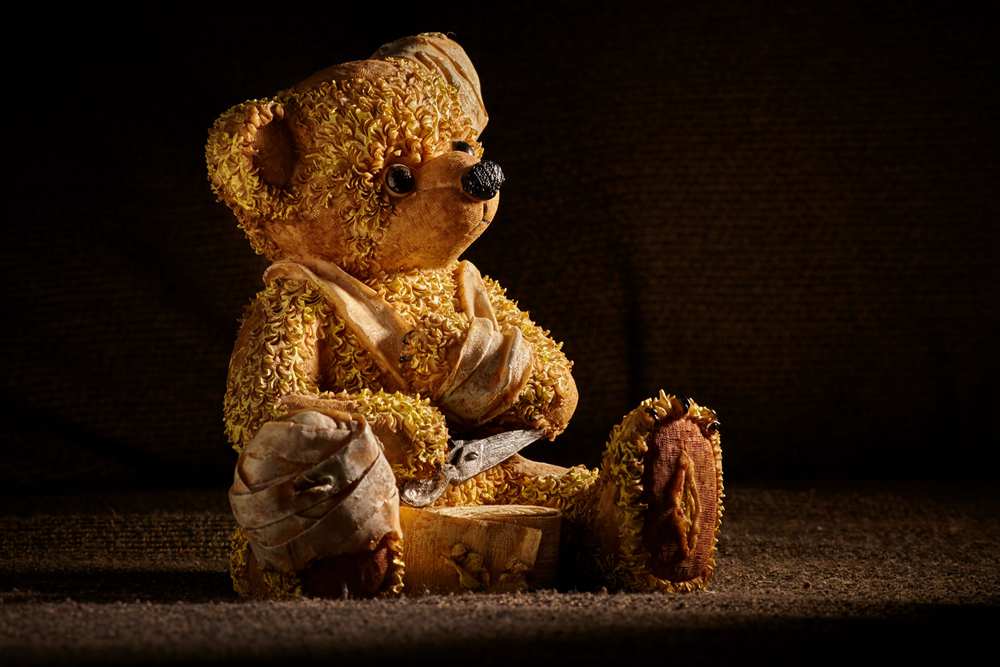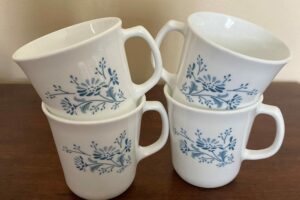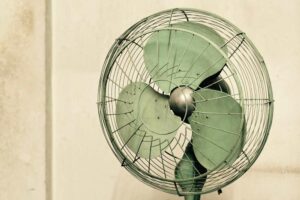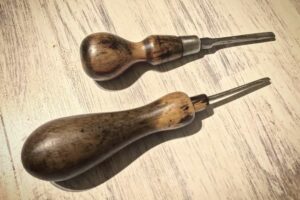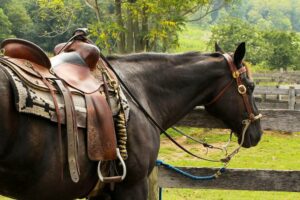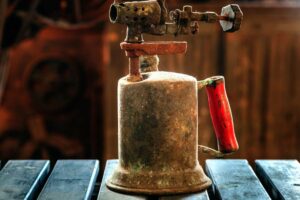Antique teddy bears hold a special place in the hearts of many collectors around the world, and with good reason. These timeless treasures not only evoke a sense of nostalgia, but also hold immense value for those who appreciate their unique history and craftsmanship. Entering the world of antique teddy bear collecting can be an exciting journey, and knowing how to identify and value these fascinating toys is an essential skill you’ll want to develop.
In order to truly immerse yourself in antique teddy bear identification and valuation, you need to understand the various factors that come into play. These factors include the maker, material, appearance, and history of the bear. As you continue your exploration, you’ll encounter renowned makers such as J.K. Farnell, Steiff, Gund, Ideal Toy Company, Chiltern Toy Works, and Schuco, all of which have contributed immensely to the world of antique teddy bears.
So, how can you best become well-versed in the world of antique teddy bear identification and valuation? Start by examining the unique characteristics of these plush toys, read reference books, and familiarize yourself with the signs of the manufacturer’s name. In time, you’ll find yourself an expert in spotting valuable teddy bears and appreciating their rich history. Happy hunting!
Table of Contents
History of Antique Teddy Bears
Origin and Theodore Roosevelt
The story of antique teddy bears begins with Theodore Roosevelt, the 26th President of the United States. In 1902, Roosevelt went to Mississippi to settle a border dispute between Mississippi and Louisiana. While he was there, he participated in a hunting expedition. However, when he was presented with a captured bear to shoot, he refused, feeling it was unsportsmanlike. This act of compassion caught the attention of the Washington Post, which published a political cartoon portraying the incident.
The cartoon inspired a Brooklyn-based shopkeeper, Morris Michtom, to create a stuffed bear toy and name it “Teddy’s Bear” in honor of Roosevelt. With his wife’s help, Michtom sought permission from Roosevelt to use the president’s nickname, “Teddy,” for the bear. With consent granted, Michtom’s teddy bears became an instant hit, and the couple soon founded the Ideal Novelty and Toy Company to produce these bears, marking the origin of American teddy bears.
Early Manufacturers
While Michtom’s teddy bears were gaining popularity in the United States, another company was introducing its version of the toy across the Atlantic. In Germany, Margarete Steiff, a seamstress, founded a soft toy company in 1880. Her nephew, Richard Steiff, joined her in the business and designed a bear with movable limbs. The German-built teddy bears featured a more realistic design compared to their American counterparts, and many early iterations were string-jointed.
In 1903, during the Leipzig Toy Fair, an American buyer discovered Steiff’s bears and ordered 3,000 of them, which led to their introduction to the American market. With Steiff’s German teddy bears and Michtom’s Ideal Novelty and Toy Company’s creations both gaining immense popularity, other countries soon began producing their versions of the teddy bear. Notably, French manufacturers started making their teddy bears, each distinctive in design and materials used.
The early teddy bear manufacturers distinguished their products using:
- Specific body shapes and styles
- Unique color patterns
- Branding elements
- Varied fur fabric materials
- Different types of stuffing
- Various eye materials, such as wooden or glass eyes
Consequently, the global teddy bear industry emerged, thanks to the combined efforts of Morris Michtom, the Ideal Novelty and Toy Company, Margarete Steiff, Richard Steiff, and other manufacturers across the United States, Germany, and France. Today, these antique teddy bears are valuable to both collectors and enthusiasts, with their identification and value influenced by factors such as age, rarity, manufacturing origin, and condition.
8 Types of Most Valuable Antique Teddy Bears
In this guide, we will discuss eight of the most valuable antique teddy bears. These bears come from popular manufacturers known for their design, quality, and attention to detail. Throughout the years, some of these bears have fetched high prices at auctions.
Steiff Bears

Steiff is a German brand famous for producing high-quality toys. These bears are recognizable by their “button in ear” trademark. It is essential to pay attention to details such as ear buttons and tags to determine the genuine value. One record-breaking Steiff bear, named Teddy Girl, sold for a jaw-dropping $110,000.
Ideal Bears

Ideal Novelty and Toy Company is an American manufacturer known for producing the first American teddy bear in 1902. These bears are known for their distinct mohair and charming features. One valuable example from this company is Ralphie, a golden mohair bear dating back to 1908-1910, which sold for £90.
Merrythought Bears
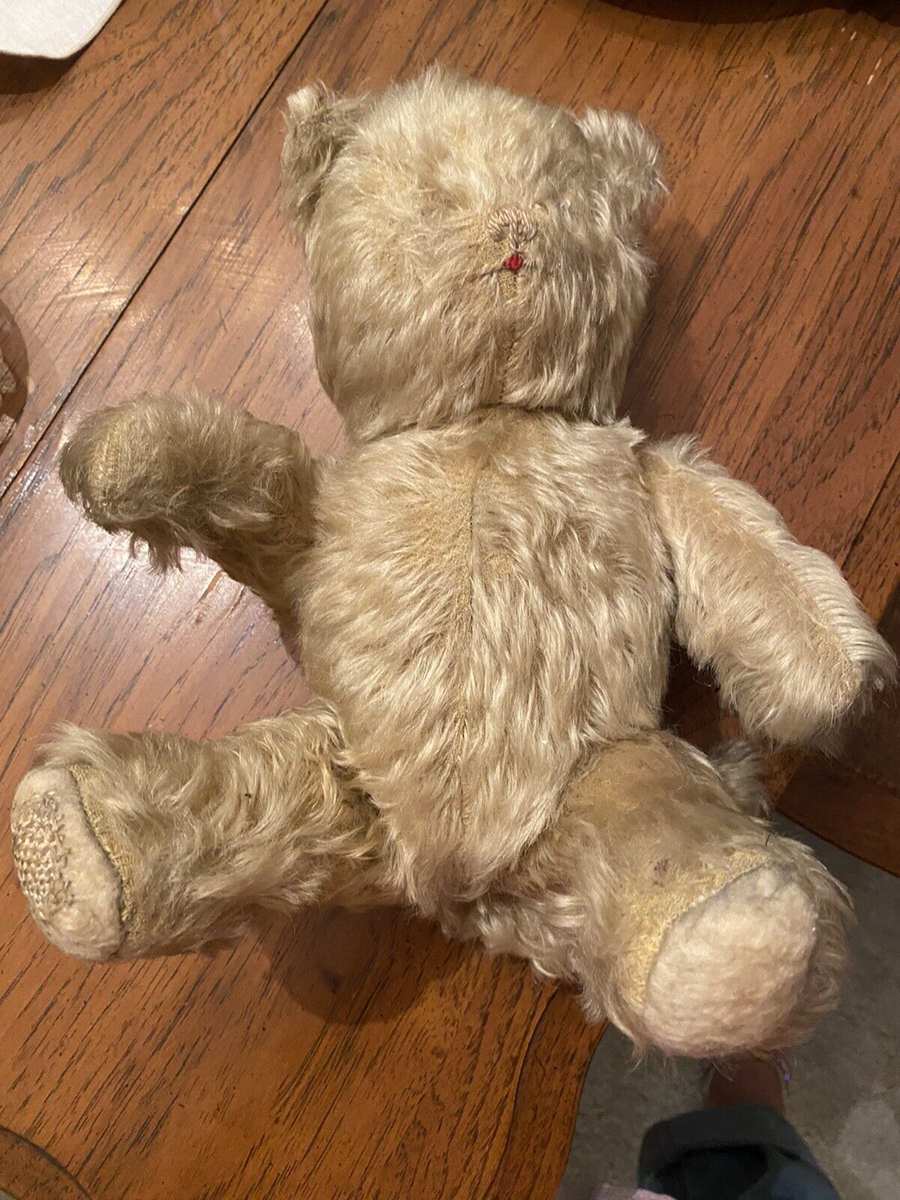
Merrythought, a British company, has been producing teddy bears since the 1930s. Their bears are known for their distinct craftsmanship and charming facial features. One of the most prized Merrythought bears, aptly named Titan, fetched an impressive price of £2,000.
Farnell Bears
Farnell is another British teddy bear manufacturer known for creating the first British bear in 1908. Their bears are known for their expressive faces and quality craftsmanship. A notable Farnell bear, named Jasper, sold for an impressive £1,500.
Chad Valley Bears
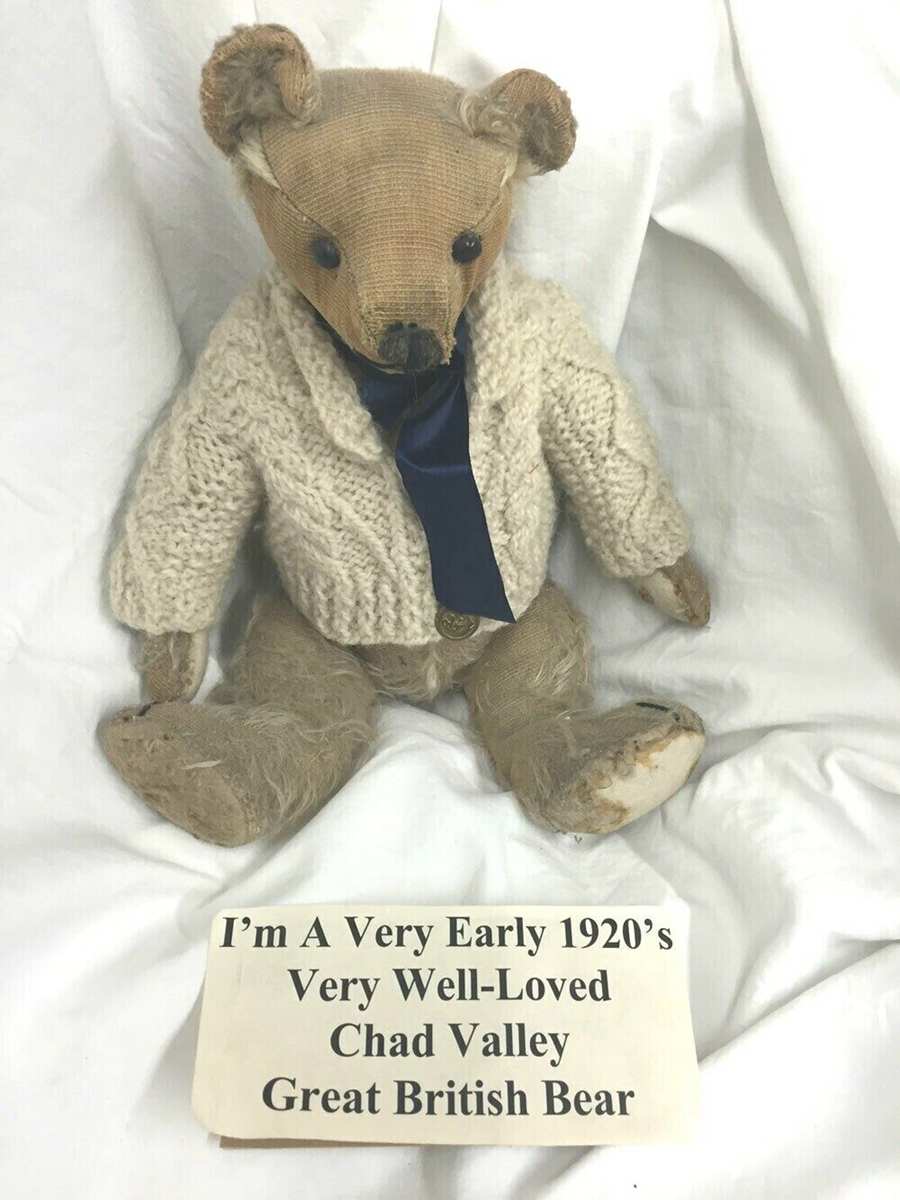
Chad Valley, a UK-based company, made bears with a unique swivel head and a distinct appearance. Their bears are known for their superior quality and attention to detail. One Chad Valley masterpiece, a bear named Winston, sold for £600.
Bing Bears
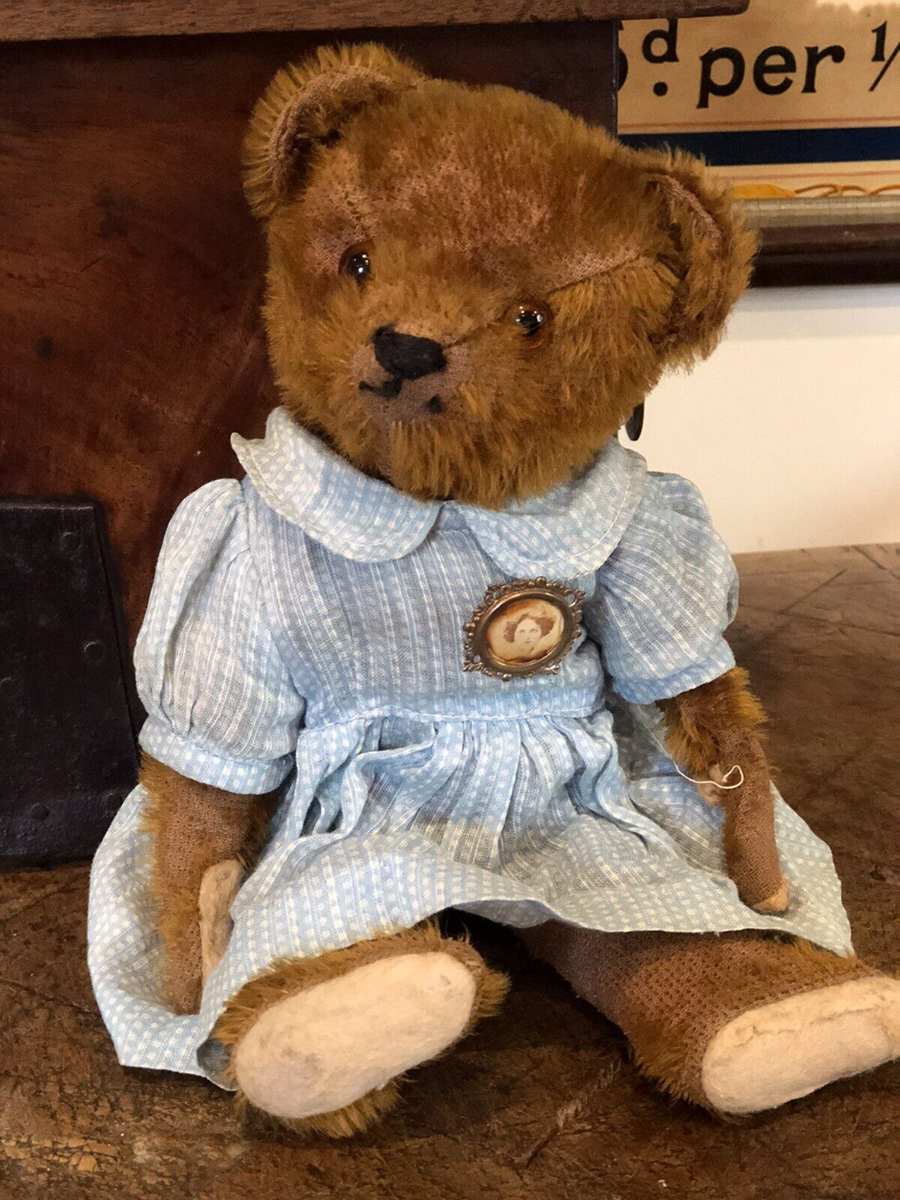
Bing is a German manufacturer that began producing teddy bears in 1907. Their bears often feature intricate stitching and unique design features. One of the most expensive Bing bears, named Mr. Cinnamon, sold for an astounding €2,800.
Deans Bears
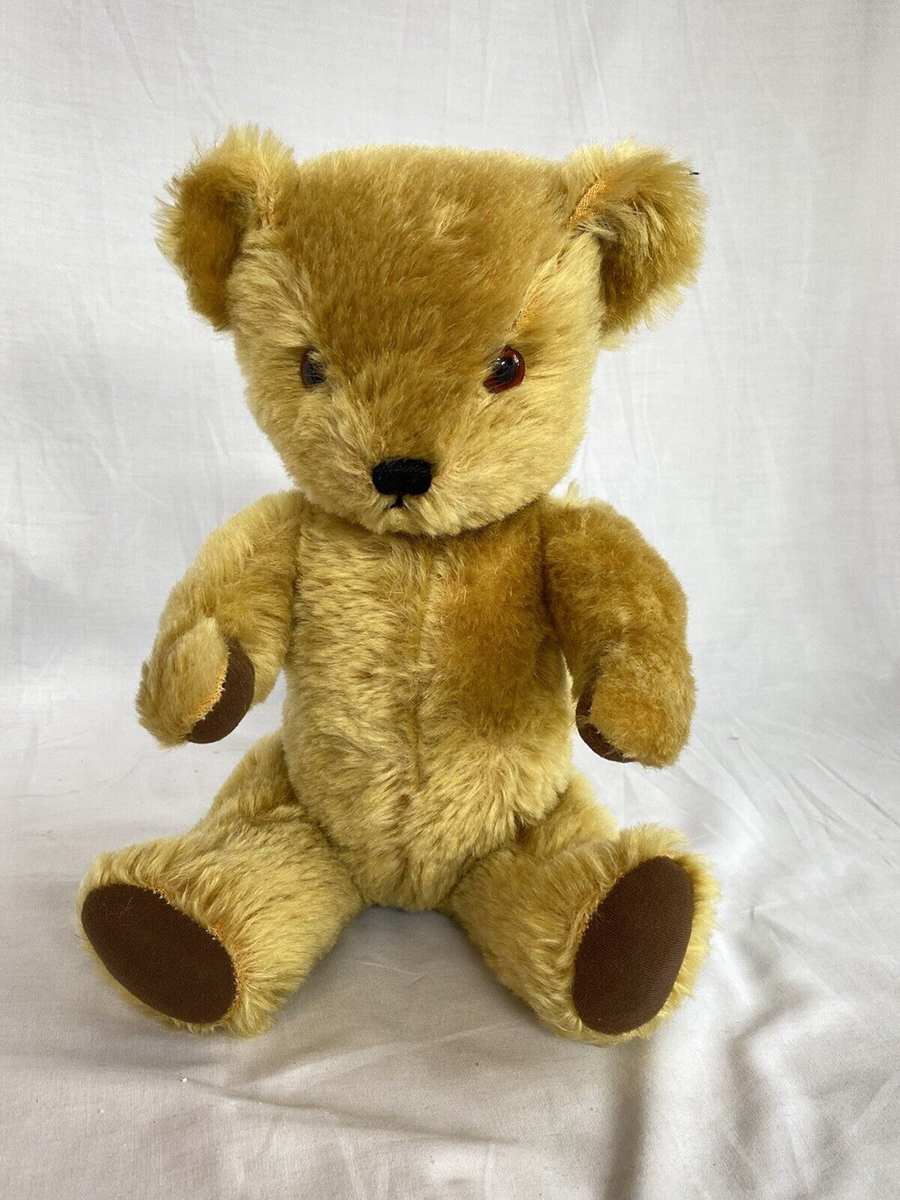
Deans is a British company founded in 1903, known for creating charming bears with a unique swivel head and jointed limbs. Some Deans bears can sell for over $1,000, such as a bear named Oliver, who sold for $1,200.
Hermann Bears
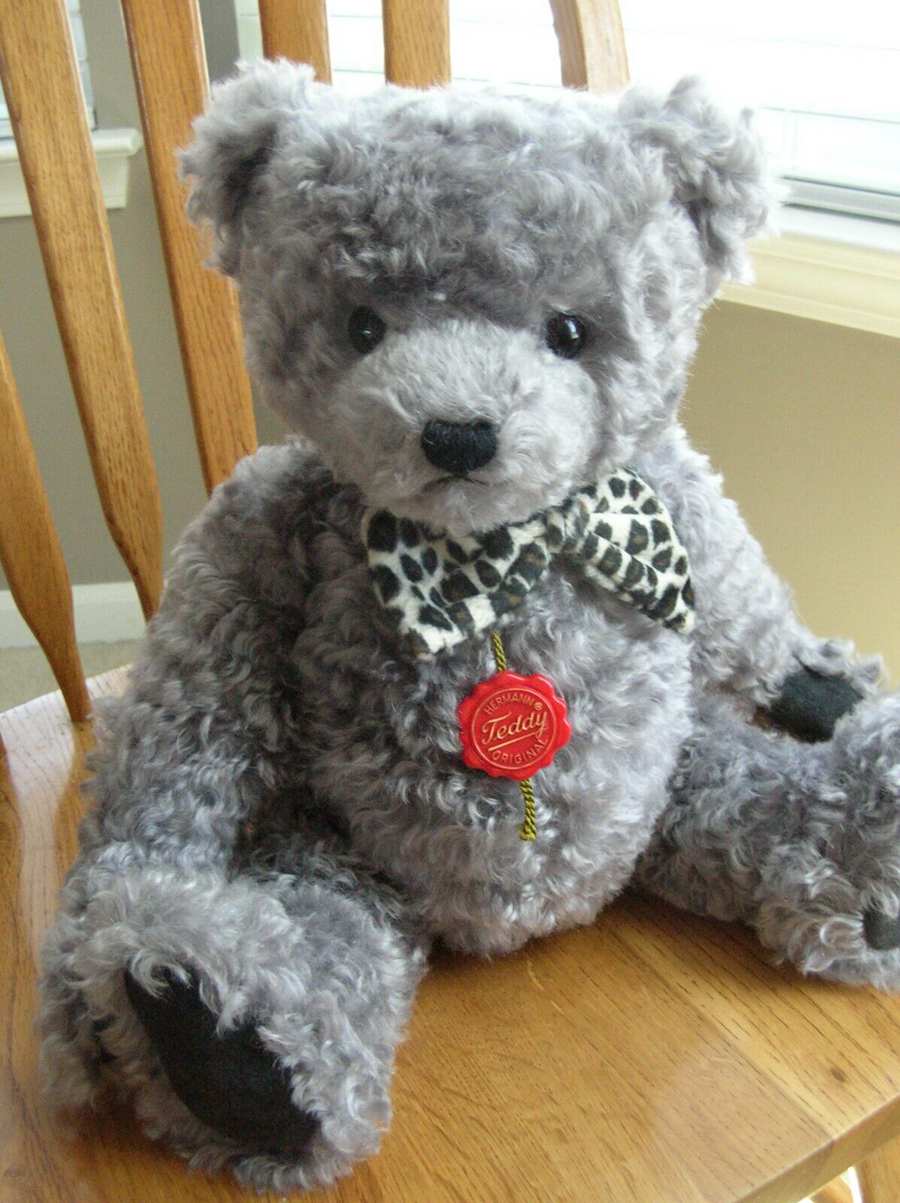
Hermann is another German teddy bear manufacturer renowned for their expertise and quality. Their bears often feature distinctive stitching and expressive faces. One notable Hermann bear, known as Prince Charles, sold for €1,500.
In conclusion, understanding the identification and value of antique teddy bears is essential for collectors. By examining specific features and manufacturer histories, you can better determine the value of your teddy bears and build a more knowledgeable collection.
10 Factors That Affect Antique Teddy Bear Identification & Its Value
1. Age
To identify the age of an antique teddy bear, begin by examining its eyes. Teddy bears from 1902-1915 typically had wooden or leather-covered wooden boot button eyes on wire hooks or shanks. During WW1, glass eyes (amber, blue, black, or clear with painted backs) replaced wooden eyes. Glass eyes feel cooler and harder than their plastic counterparts.
Next, consider the design and materials used in the teddy bear. Early 1900s teddy bears are often golden with flat limbs and triangle-shaped heads. These bears measure around 19.5 inches tall and feature pointy ears and black eyes. They generally lack labels, but you can spot them by looking for cross stitches, felt lips, and rough wool stuffing.
When identifying antique teddy bears from specific manufacturers, pay attention to the following:
| Manufacturer | Production Years |
|---|---|
| J.K. Farnell | 1840-1968 |
| Steiff | 1880-present |
| Gund | 1898-present |
| Ideal Toy Company | 1907-1997 |
| Chiltern Toy Works | 1908-1967 |
| Schuco | 1912-1976 |
Search for any signs of the manufacturer’s name on your teddy bear to aid in identification.
Regarding valuation, factors such as the teddy bear’s age, condition, rarity, and manufacturer play a significant role. The following table provides average valuations based on some of these factors:
| Age | Condition | Manufacturer | Average Valuation |
|---|---|---|---|
| Early 1900s | Good | Steiff | $500 – 600 |
| 1920s | Fair | Chiltern | $450 – 500 |
| 1930s | Excellent | Farnell | $600 – 700 |
| 1940s | Poor | Gund | $200 – 250 |
| 1950s | Good | Ideal | $300 – 350 |
| Pre-1960 (rare) | Excellent | Schuco | $700 – 800 |
Remember, these valuations are estimations, and actual values may vary. It’s essential to consult with teddy bear experts and collectors for accurate appraisals.
2. Rarity
When identifying and valuing antique teddy bears, rarity is a crucial factor to consider. Rare teddy bears often hold a higher value due to their limited production and unique features. In this section, we will examine several aspects that contribute to a teddy bear’s rarity.
Some factors affecting the rarity of antique teddy bears include:
- The manufacturer and production period: Renowned manufacturers like J.K. Farnell, Steiff, Gund, and Ideal Toy Company often produced bears with limited editions or specific production periods, which can impact rarity.
- Special features: Unique design elements such as unusual colors, facial expressions, clothing, or accessories can increase a bear’s rarity and value.
- Historical significance: Teddy bears that commemorate special events or historical moments, such as the Steiff Titanic Mourning Bear, typically have higher value due to their rarity and historical context.
To help you understand how these factors affect an antique teddy bear’s value, here’s a valuation table:
| Factor | Description | Average Valuation Range |
|---|---|---|
| Manufacturer | Renowned manufacturer (e.g., Steiff, J.K. Farnell) | $500 – 1,000 |
| Production Period | Limited production or specific period | $400 – 800 |
| Special Features | Unique design elements (e.g., unusual colors, expressions) | $300 – 700 |
| Historical Significance | Commemorating special events or historical moments (e.g., Titanic Mourning Bear) | $1,000 – 2,000 |
Keep in mind that these valuation ranges are not definitive; the actual value of a specific antique teddy bear could be higher or lower depending on the individual characteristics, condition, and desirability in the market. It’s essential to carefully examine each aspect and consult expert resources when determining your antique teddy bear’s value.
3. Condition
The condition of an antique teddy bear is one of the most significant factors determining its value. It’s essential to pay close attention to the following elements when examining a teddy bear’s condition:
- Fur or fabric: Check for any signs of wear, damage, or fading. A teddy bear in good condition will have its original fur or fabric intact, with minimal signs of wear.
- Stuffing: The type and condition of the stuffing can provide clues to a bear’s age. A bear with a soft, plush body is likely to be from the 1930s or later, while those with a firmer, wood wool-stuffed head may date back to an earlier era.
- Eyes: Early teddy bears had wooden or leather-covered wooden boot buttons for eyes, while later bears had glass or plastic eyes. Glass eyes are cooler and harder than plastic ones, so this can be a helpful distinguishing feature.
- Nose: A bear’s nose can sometimes show signs of wear or previous repairs, which may affect its value. Be sure to inspect this area closely.
The average valuation for antique teddy bears in different conditions can be seen in the table below:
| Antique Teddy Bear Condition | Average Valuation |
|---|---|
| Mint, Like New | $1,000 – 1,200 |
| Excellent, Minor Wear | $800 – 1,000 |
| Good, Moderate Wear | $500 – 700 |
| Fair, Significant Wear | $300 – 500 |
| Poor, Damaged | $100 – 200 |
Remember, unaltered original condition always carries a premium. So before carrying out any repairs on an antique teddy bear, seek professional advice on how best to proceed, as poorly carried out restoration can significantly impact its value.
4. Materials
Antique teddy bears are made from various materials over the years. Initially, teddy bears were stuffed with wood wool, also known as excelsior. It is made from long, fine wood shavings, which give teddy bears a crunchy feel when squeezed. Later, after 1914, kapok became a popular stuffing material. This silky fiber comes from the seed pod of a tropical tree and is similar to silky cotton wool.
In the 1960s, plastic foam was introduced as a stuffing material. This shredded and spongy material made teddy bears machine-washable. By the 1970s, polyester became the most common stuffing material used, and it continues to be popular today.
As for the exterior, early teddy bears had a silk mohair coat, which contributed to their unique appearance. The bears usually featured round humps and trimmed muzzles, along with cupped ears and criss-cross nose stitches.
Here is a valuation table based on different factors that affect the value of antique teddy bears:
| Factors Affecting Value | Average Valuation |
|---|---|
| Material: Wood Wool | $200 – $300 |
| Material: Kapok | $250 – $350 |
| Material: Plastic Foam | $150 – $250 |
| Material: Polyester | $100 – $200 |
| Exterior: Silk Mohair | $250 – $400 |
It is important to consider other factors such as the maker, special features, and history of the teddy bear when evaluating its value. Additionally, the condition of the antique teddy bear plays a significant role in determining its worth. A well-preserved and original teddy bear is likely to have a higher valuation.
5. Provenance
When identifying and valuing antique teddy bears, it’s essential to consider their provenance. Provenance refers to the bear’s origin, history, and previous ownership, which can significantly impact its value. In this section, you will learn about the factors that contribute to a teddy bear’s provenance and how that affects its valuation.
Antique teddy bears are often from well-known manufacturers such as:
- J.K. Farnell (1840-1968)
- Steiff (1880 to present day)
- Gund (1898 to present day)
- Ideal Toy Company (1907-1997)
- Chiltern Toy Works (1908-1967)
- Schuco (1912-1976)
To determine a bear’s provenance, search for any signs of the manufacturer’s name as that’s the first step in antique teddy bear identification. Additionally, examine the bear’s material, appearance, and any special features. Reference books and historical records can also be helpful to trace a bear’s history.
The following table provides an overview of antique teddy bear valuation based on specific factors:
| Factors Affecting Value | Average Valuation |
|---|---|
| Condition | $100 – $1,500+ |
| Manufacturer | $200 – $2,500+ |
| Special Features | $300 – $1,000+ |
| History & Provenance | $500 – $3,000+ |
Keep in mind that these valuations can vary depending on the uniqueness, rarity, and demand for a specific teddy bear. By researching and understanding a teddy bear’s provenance and other factors, you can better identify and determine its value in the antique market.
6. Features
When identifying antique teddy bears, it’s essential to focus on certain features that can reveal their age and value. Some of these features include:
- Distinctive Features: Many manufacturers have unique characteristics in their teddy bears that make them easily identifiable. For instance, J.K. Farnell bears have long arms that turn upwards at the paws, while the first Ideal Toy Company bears had rounded thighs and pointy toes.
- Material: Identifying the material used for the teddy bear’s fur or fabric can give clues to its age. Early teddy bears often used mohair or silk plush, while later bears might have synthetic fabrics.
- Body Structure & Shape: The teddy bear’s shape and structure can indicate its age, especially when compared to other bears from the same manufacturer. Pay attention to the length of the limbs, the roundness of the body, and joint construction.
- Color: The color of a teddy bear can fade or change over time, so be aware of any inconsistencies in dye or materials. Early teddy bears often featured a more muted color palette.
- Branding: Check for any labels or tags that may reveal the manufacturer and origin of the teddy bear. Many early bears would have sewn-in labels or metal buttons indicating their maker.
Here’s a valuation table highlighting how certain factors affect the value of antique teddy bears:
| Factor | Average Valuation |
|---|---|
| Ideal Condition | $500 – 600 |
| Minor Wear & Tear | $450 – 500 |
| Damaged but Repairable | $300 – 350 |
| Major Damage | $100 – 120 |
| Rare Manufacturer | $1000 – 1500 |
| Limited Edition/Specialties | $800 – 1000 |
Remember, the condition, manufacturer, and any special features all play a significant role in determining the value of an antique teddy bear. By examining these aspects closely, you’ll be better able to identify and appraise the teddy bears in your collection.
7. Size
When identifying antique teddy bears, the size of the bear can be an essential factor. Throughout history, various manufacturers produced teddy bears in different sizes, usually ranging from 10 to 30 inches in height. Knowing the common sizes for particular brands and time periods can help you determine a bear’s value more accurately.
In general, antique bears from the early 1900s were larger, with some reaching over 20 inches in height. As time progressed, teddy bears became smaller due to changes in materials and manufacturing processes.
Here’s a rough guide to the sizes of antique teddy bears from various time periods:
Early 1900s (Pre-1920):
- Golden bears: 19.5 inches tall
- Mohair bears: 16-24 inches tall
1920-1940:
- Jointed bears: 12-20 inches tall
- Non-jointed bears: 10-16 inches tall
Post-1940:
- Miniature bears: 6-10 inches tall
- Larger bears: 16-24 inches tall
The following table shows the average valuation based on the size of antique teddy bears:
| Size of Teddy Bear | Average Valuation |
|---|---|
| 6-10 inches (Miniature) | $100 – 150 |
| 10-16 inches (Small) | $200 – 250 |
| 16-24 inches (Medium) | $300 – 400 |
| 24 inches and above (Large) | $500 – 600 |
Keep in mind that these valuations are only rough estimates and can vary based on other factors, such as the bear’s condition, materials, and rarity. To get a more accurate value for your antique teddy bear, consult a professional appraiser or refer to specialized reference books and websites that provide information on specific brands and models.
8. Demand
When it comes to antique teddy bears, demand often stems from collectors who appreciate the history, craftsmanship, and rarity of these unique stuffed toys. While the market is diverse, there are some key factors that contribute to the value of an antique teddy bear.
Factors that affect the value of an antique teddy bear include:
- The condition: Well-preserved antique teddy bears with minimal wear and tear will fetch higher prices, while those with significant damage may be worth less.
- The manufacturer: Some teddy bear makers, like Steiff and J.K. Farnell, are more sought after and command higher prices.
- Special features: Unique characteristics, such as limited editions or rare materials, can increase a teddy bear’s value.
- The history: An antique teddy bear with a verifiable provenance may be more valuable to collectors.
To give you a clearer idea of antique teddy bear valuations, below is a table with some examples based on specific factors:
| Factor | Average Valuation |
|---|---|
| Pristine Condition | $800 – $1,000 |
| Good Condition | $500 – $800 |
| Fair Condition | $300 – $500 |
| Poor Condition | $100 – $300 |
| Steiff Teddy Bear | $800 – $1,200 |
| J.K. Farnell Teddy Bear | $1,000 – $1,500 |
| Limited Edition | $1,200 – $1,800 |
| Verifiable Provenance | $1,000 – $2,000 |
Keep in mind that these valuation ranges are not set in stone. The value of an individual antique teddy bear may fluctuate based on various factors, including current market demand, collector interest, and any unique attributes the teddy bear possesses. To accurately determine the value of your antique teddy bear, it is essential to research and consult with experts in the field.
9. Market Conditions
When it comes to antique teddy bears, market conditions are important for understanding their value. Various factors can influence the pricing of these beloved collectibles, including rarity, condition, and historical significance. To help you better understand the value of your antique teddy bear, let’s discuss some key factors that affect their valuation.
Firstly, the rarity of an antique teddy bear has a significant impact on its value. Limited edition or hard-to-find bears often fetch higher prices compared to their more common counterparts. For example, the Steiff Titanic Mourning Bear, produced in limited numbers after the sinking of the Titanic in 1912, can be highly sought after by collectors.
In addition to rarity, the condition of your antique teddy bears greatly influences their value. Well-preserved bears, with their original fur, joints, and features intact, are worth more than bears in poor condition or with significant wear and tear. As with most antiques, maintaining your teddy bear in its original state is crucial for preserving its value.
Lastly, historical significance plays a role in the value of antique teddy bears. Bears associated with memorable events, such as the aforementioned Titanic Mourning Bear, can be more valuable due to their unique connection to history.
Here’s a valuation table to help you get an idea of the value of your antique teddy bears based on rarity, condition, and historical significance:
| Rarity and Condition | Average Valuation |
|---|---|
| Common Bears, Excellent Condition | $150 – 250 |
| Common Bears, Poor Condition | $50 – 100 |
| Rare Bears, Excellent Condition | $700 – 1000 |
| Rare Bears, Poor Condition | $250 – 400 |
| Historically Significant Bears, Excellent Condition | $1000 – 1500 |
| Historically Significant Bears, Poor Condition | $300 – 600 |
Remember, these are just average estimations. The actual value of your antique teddy bear might vary depending on specific factors, such as the maker, material, and unique features. Therefore, you should consider getting a professional appraisal for a more accurate valuation.
Final Thoughts
As you continue your journey into the fascinating world of antique teddy bears, remember to pay close attention to the key details that will help you identify and value these charming collectibles:
- Makers: Learn about the history and hallmarks of the most prestigious manufacturers, such as Steiff and Merrythought, including their signature tags, buttons, and unique features. Familiarize yourself with their distinct styles and special edition models.
- Materials: Recognize that older teddy bears used wood wool, kapok fiber, and mohair, compared to newer replicas and modern teddy bears that tend to use synthetic materials.
- Appearance: Look for indicators of age in the teddy bear’s construction, such as their pads, eye materials, and overall coat. Consider the wear and musty smell that antique bears often possess due to years of storage.
When valuing an antique teddy bear, keep these factors in mind:
- Condition: Examine the bear’s overall state, including any wear, repairs, or alterations.
- Manufacturers: The prestige and rarity of the bear’s maker can significantly impact the value.
- Special Features: Unique editions, limited runs, or reproductions can drastically affect the teddy bear’s worth.
- History: Bears with a storied past, previous exhibitions, or documented ownership hold added value.
By considering these aspects, you’ll be well on your way to identifying and valuing the antique teddy bears you encounter. Happy collecting!
FAQ
Q: How can I determine my antique teddy bear’s age?
A: To determine the age of an antique teddy bear, consider these factors:
- Teddy Bear’s Eyes: Early teddy bears (1902-1915) had wooden or leather-covered wooden boot button eyes, while glass eyes replaced wooden ones during WW1. Glass eyes are cooler and harder than plastic eyes.
- Branding: Older bears may not have labels, as manufacturers didn’t always trademark their toys. For instance, the first Ideal Novelty and Toy Co. bears didn’t have labels.
- Material & Appearance: Study the fur texture, body shape, and color of the bear. Original bears often have a particular appearance distinctive to their maker, which can help you identify their age.
Q: How can I identify the value of an antique teddy bear?
A: Factors that determine the value of an antique teddy bear include:
- Condition: The better the condition, the higher the value.
- Manufacturer: Some manufacturers, such as Steiff, produce highly valued bears.
- Special Features: Bears with unusual or rare designs can fetch higher prices.
- History: Limited edition bears or those with a specific historical significance are worth more.
Q: Which antique teddy bears are considered the most valuable?
A: Steiff bears are among the most sought-after and valuable antique teddy bears in the market. A notable example is the Steiff Titanic Mourning Bear, produced in limited quantities (only 600) after the sinking of the Titanic in 1912. This bear, featuring red rimmed eyes, is highly collectible and valuable.

